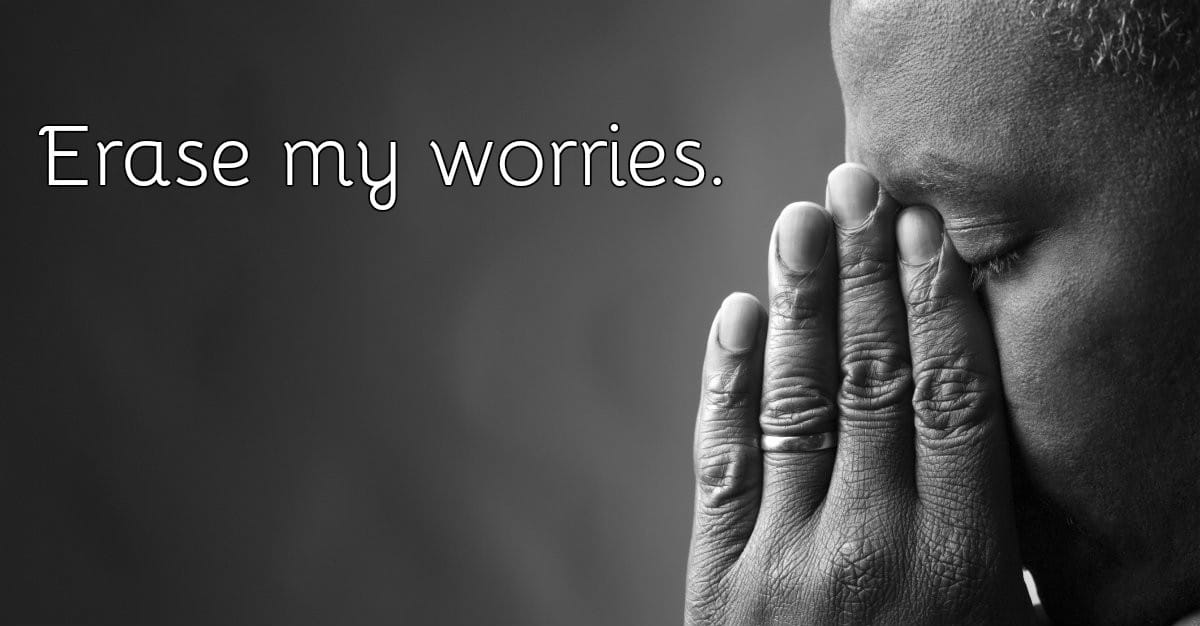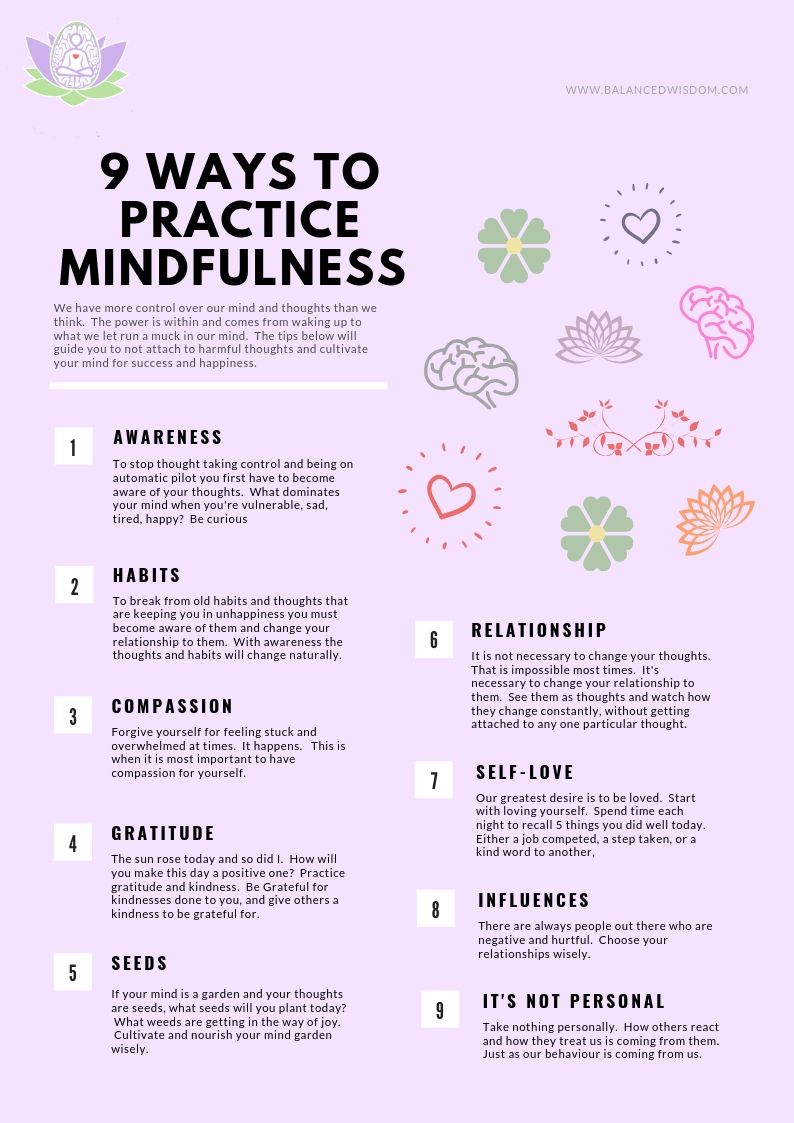
Welcome to WinnerTrick.com — the best source for success and personal development articles, motivational quotes, and tips to live your best life.
contact@winnertrick.com
Are you constantly battling with a flood of anxious thoughts and worries that refuse to let up? If you live with anxiety, chances are you've developed a tense, even adversarial, relationship with your own mind. It can feel like your brain has become a relentless tormentor—offering up an endless stream of warnings, fears, and worst-case scenarios that hijack your peace of mind.
Your thoughts whisper that danger is always just around the corner. They pressure you to overanalyze, to seek constant reassurance, and to prepare for every possible outcome—no matter how unlikely. These thoughts come with urgency, with drama, with a sense of dread that keeps you locked in a cycle of fear. And the worst part? When you try to talk back to them—when you try to reason or calm yourself down—your mind often turns on you, calling you irrational, careless, or foolish for not taking them seriously. It becomes a mental bully that knows exactly how to push your buttons.

It’s a twisted irony: the very mind that seems to be harassing you is the one you continue to trust the most. You treat it like a guru, believing every word it tells you, even when it's clearly leading you into deeper fear and confusion. You obey it, respect it, and invest in it—like it’s the source of all truth. But here's the harsh truth: you're giving immense authority to something that may not deserve it.
The real issue isn’t that your mind produces negative or fearful thoughts—every mind does that. The issue is that you treat those thoughts as if they are sacred, factual, and meaningful. Just because a thought feels urgent or important doesn’t mean it is.
Let’s set something straight: thoughts are not divine messages. They’re not facts. They’re not prophecies. Thoughts are often nothing more than mental noise—random firings of a hyperactive brain doing what it’s designed to do: scan for danger, imagine outcomes, and replay memories.
What truly matters is not the content of your thoughts—but how you choose to relate to them. The trap of anxiety is in giving your thoughts too much weight, taking them too literally, and assigning them power they don’t inherently have.
If you find yourself stuck in obsessive fear, it’s not because your thoughts are especially dark or dangerous. It’s because you’re investing in them. You’re giving them the credibility of a courtroom witness when, in reality, they’re more like a heckler in the stands—loud, annoying, but not worth your time.
And no, this isn’t just your brain misbehaving while everyone else’s runs smoothly. The truth is, everyone’s mind produces weird, anxious, and irrational thoughts. The difference is in what we do next.

Your brain evolved to keep you physically safe. That’s why it often errs on the side of “better safe than sorry.” It would rather raise a false alarm than miss a real one. That’s good for dodging tigers—not so great when you’re trying to fall asleep and your mind suddenly tells you your partner might leave you, you’ll lose your job, or your headache means brain cancer.
These thoughts might feel like emergencies, but in reality, they’re just noise. Like a badly tuned radio. Or a hiccup in your mental processing. Treat them accordingly.
If your mind whispers that your loved one might suddenly abandon you? That’s just brain static. Nod, smirk, and get back to your day.
If it screams that you might get a horrible disease from touching a doorknob? That’s a glitch, not a prophecy. Move along.
If it hisses that your anxiety is permanent and you'll never improve? That’s just more fiction. Say, “Thanks for the input,” and keep moving forward.
Here’s something people often get wrong: the goal is not to stop anxious thoughts from coming. You can’t. Nobody can. Trying to suppress them actually backfires—like trying not to think about a pink elephant.
Instead, the skill is in how you respond when those thoughts arise. Do you drop everything and chase them down the mental rabbit hole? Or do you smile politely and turn your attention back to what’s in front of you?
Start practicing a new response: one of indifference. Let those thoughts show up and pass by like clouds in the sky. No reaction. No debate. Just move on.
When your brain starts spinning anxious scenarios, don’t bow to it. Don’t argue with it. And above all, don’t treat it like a prophet. You owe it nothing.

Worrying is something we all do—it’s part of being human. But when your mind becomes a constant doomsayer, obsessing over every “what if” scenario, it drains your emotional energy and hijacks your ability to enjoy life. If you’re reading this, you might already be caught in the loop: always overthinking, unable to stop predicting disasters that never arrive. But the good news is that you can change your relationship with worry, starting with some practical, research-backed techniques.
Trying to suppress worry doesn’t work. But postponing it can.
By giving your worries a specific space in your day, you remove their power to interrupt everything else. Here’s how to implement a worry window:
Schedule a Daily “Worry Time”
Pick a set block of time—say, 20 minutes in the late afternoon—dedicated exclusively to worrying. Choose a consistent spot, like your living room couch. This becomes your brain’s official worry space.
Jot Down Worries Throughout the Day
When intrusive thoughts creep in during work or family time, resist the urge to engage. Instead, write them down in a “worry journal.” This is a holding tank for anxious thoughts you’ll revisit later.
Revisit the List—Then Let It Go
During your worry time, look through your list. Ask: do these thoughts still matter? Often, you’ll find they feel less urgent by then. For the ones that still sting, reflect—but only within your scheduled time. Then, return to your life.
This method trains your brain to delay anxiety rather than indulge it immediately—cutting off its power to dominate your entire day.

If you live with chronic worry, chances are your mental filter is distorted. Your thoughts might be laced with irrational fears, exaggerated threats, or beliefs that assume the worst. These distorted patterns are called cognitive distortions, and they silently reinforce anxiety unless you call them out.
Some examples include:
Black-and-white thinking: “If I don’t ace this, I’ve failed completely.”
Catastrophizing: “If I forget my lines, my career will be over.”
Mental filtering: Focusing on the single criticism instead of the 99 compliments.
Mind reading: “I know she thinks I’m an idiot.”
Fortune-telling: “This is going to end badly, I just know it.”
Emotional reasoning: “I feel scared, so I must be in danger.”
Labeling: “I’m a loser,” instead of “I made a mistake.”
Once you learn to spot these mental habits, you can begin to challenge them. During your worry time, ask yourself:
Is this thought actually true—or just a fear?
What evidence supports or contradicts this idea?
Am I jumping to conclusions?
Would I talk this way to a friend?
What’s a more balanced way to view this?
The goal isn’t to think like a robot, but to introduce reason into the emotional chaos. Over time, this creates a calmer, more grounded mindset.

Worry gives you a false sense of control. It convinces you that if you keep thinking, you’ll eventually figure everything out. But here’s the truth: not all problems are solvable—and trying to fix the unfixable is the fastest way to burnout.
To break the cycle, train yourself to separate actionable worries from unresolvable ones:
Solvable worries are grounded in real-world concerns—like paying rent or preparing for an exam. These have steps you can take. The moment you start making a plan, anxiety tends to ease.
Unsolvable worries are rooted in uncertainty. “What if I get sick someday?” “What if something happens to my child?” These have no immediate solution, no actions to take.
When facing an unsolvable worry, your job is not to fix it—but to accept the unknown:
Remind yourself that not knowing is part of life.
Notice your discomfort without resisting it.
Ask yourself: “Can I live with the uncertainty, even if it’s hard?”
Tune into your feelings. Don’t suppress them—just allow them to exist.
Once you let go of the need to control what you can’t, you free up energy to focus on what you can.

When your mind is spinning, and the anxious thoughts just won’t stop replaying, it can feel like you’re locked in an endless loop of stress. But it is possible to break that momentum. The key is to interrupt the cycle by shifting both your mental focus and physical state.
Here are some powerful ways to short-circuit worry when it gets overwhelming:
Get Moving—Literally
Physical activity resets your nervous system. Whether it’s a brisk walk, a short jog, or dancing alone in your room—movement releases feel-good endorphins and pulls you out of your head. As you move, tune in to the physical sensations—your breath, the feeling of your feet hitting the ground, the air on your skin. This helps anchor you in the present and calm racing thoughts.
Try Yoga or Tai Chi
These practices are more than just stretching. By syncing movement with breath and intention, they teach your body and brain to regulate themselves. The gentle focus draws attention away from worry and helps bring inner stillness.
Meditate, Your Way
You don’t have to sit cross-legged in silence for hours. Even five minutes of guided meditation through an app like Calm or Insight Timer can help shift your awareness away from fearful forecasting. Focus on your breath, a mantra, or the sounds around you—it all helps ground you in now.
Use Progressive Muscle Relaxation
Tense one muscle group at a time, hold it for a few seconds, then release. Move from head to toe. This method reduces physical tension and creates a feedback loop that relaxes the mind too.
Breathe, Deeply and Intentionally
Anxiety speeds up your breathing, which in turn amplifies panic. Interrupt this by practicing slow, full breaths. Breathe in through your nose for 4 counts, hold for 4, exhale through your mouth for 6. Feel yourself reset.
Practicing these techniques regularly doesn’t just make you feel better in the moment. Over time, they help rewire your brain. Studies show that meditation and deep relaxation increase activity in the prefrontal cortex—the part responsible for rational thinking and emotional regulation. The more you practice, the more mental clarity and calm you’ll build into your baseline.

You don’t need to solve your problems all by yourself. Sharing your thoughts with someone else—someone who listens without judging or trying to fix you—can be incredibly powerful. Saying your worries out loud helps take away their mystery and power.
Vocalizing Lessens the Intensity
When you keep everything locked in your head, it builds pressure. Speaking your fears out loud can help you hear them more clearly—and often, that’s when they begin to sound less rational. It helps to name them, organize them, and recognize when they’re exaggerated.
A Trusted Listener Can Reflect Reality Back to You
Choose someone who brings calm and clarity, not panic or judgment. (If your parent or best friend tends to catastrophize, they may not be the right person.) Good listeners don’t always offer answers, but they can offer presence—and sometimes, that’s enough.
Build a Support Circle
You don’t need dozens of friends. Even one or two people you can count on makes a difference. If you don’t feel like you have that yet, it’s never too late to nurture new friendships or seek a support group. Just being heard is medicine for the anxious brain.

Worry lives in the future and regret lives in the past. Mindfulness brings you back to the only place that’s real—the present moment.
Mindfulness isn’t about clearing your mind or pretending everything is okay. It’s about noticing, without judgment, what’s happening inside and around you. It helps you make peace with your thoughts without being ruled by them.
Here’s how to begin:
Observe Without Reacting
Don’t try to suppress your anxious thoughts. Instead, let them rise up, acknowledge them like passing cars, and watch them move on. You don’t need to chase them or control them. Just notice.
Recenter Your Awareness
Come back to the sensation of your breath, your feet on the ground, or the feeling of your body in the chair. Each time your mind wanders, gently return to the now. That’s the practice.
Repeat Daily
Even five minutes a day can train your brain to relate to your thoughts differently. Think of mindfulness as mental strength training—it rewires your reactivity over time.
Find a quiet, undisturbed place.
Sit comfortably with a straight spine, hands resting on your thighs.
Close your eyes. Inhale slowly through your nose, letting your belly expand.
Exhale through your mouth, letting go of tension.
Focus on your breath. Feel the cool air enter your nose, and the warmth of the air leaving your mouth.
When your mind wanders (and it will), gently bring it back to your breath.
Practice for 5 to 10 minutes, a few times a week.
Thoughts are not commands. They’re not your character, your identity, or your truth. They’re just passing visitors.
The key is not to silence your mind—but to stop obeying it blindly. Let it chatter. Let it warn. Let it create mental static. And let you return your attention to what really matters: the present, the people around you, and the life you're still building.
Make sure you enter all the required information, indicated by an asterisk (*). HTML code is not allowed.